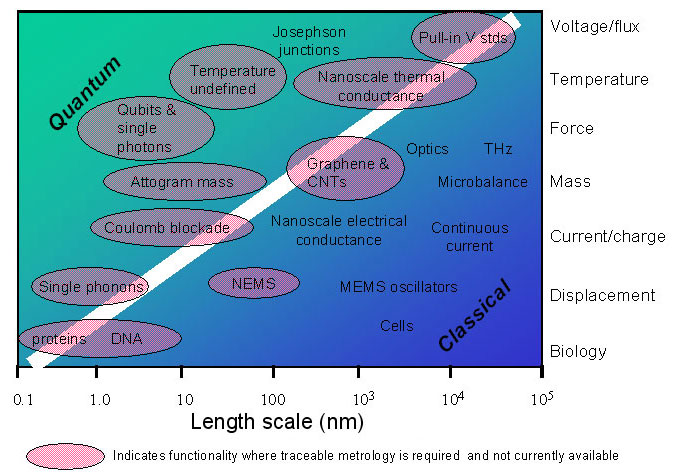Metrology with/for NEMS
Nano-Electro-Mechanical Systems (NEMS)
Micro electromechanical systems (MEMS) are already well established in consumer products and industry demand for increased complexity, speed and performance is driving size reduction towards the nanoscale and Nano-Electro-Mechanical Systems (NEMS). NEMS is a new key disruptive technology providing potential solutions to industry to a range of technological barriers over a wide spread of sectors, from ICT through physical sensors to biological sensor applications. As the dimensions of devices and structures reduce, new technologies and approaches are required. These developments will both enable and demand innovative metrology, impacting strongly over a range of sectors. To date there has been almost no metrological activity to anticipate the impending metrological needs which exploitation of NEMS will produce.
Project Objectives
This project seeks to meet these challenges by focusing on developing novel high frequency, high performance nanoscale mechanical resonators and actuators, aimed at both metrology and industrial applications including ultra-sensitive mass, force, displacement and temperature sensing at the nanoscale, single photon and single molecule measurement. As well as integrated nanoscale charge sensors, this work will facilitate ultra-stable and miniaturised voltage references.
NEMS can be optimised using advanced fabrication techniques and new materials. The JRP will investigate new materials such as graphene, new piezo electrics and MgB2 to develop high performance NEMS resonators. Novel microwave excitation and detection schemes and optical interferometric methods incorporating nanoscale metrology will be developed for NEMS resonator excitation and read out. These devices then feed into the workpackages where the focus will be on demonstrating traceable electromagnetic metrology and high precision measurements.

